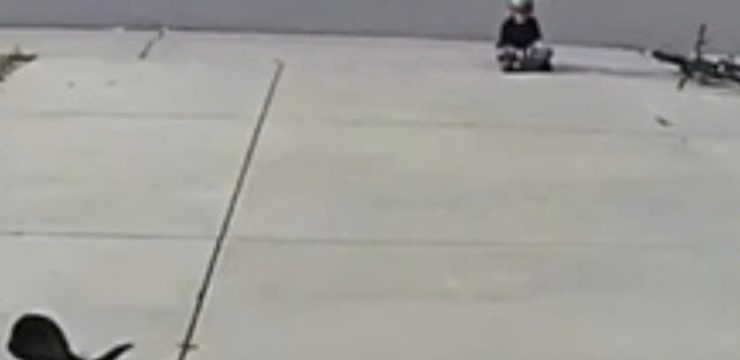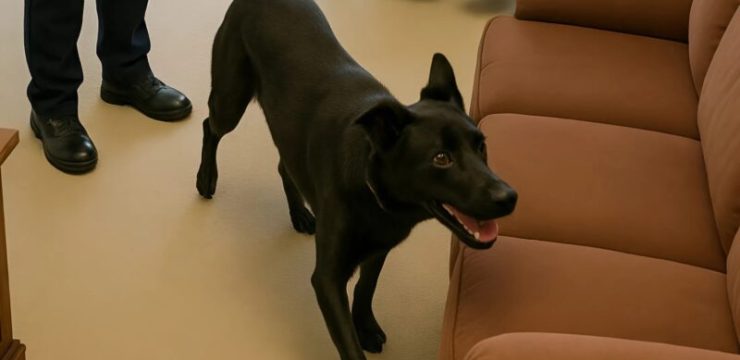For twenty long years, Mufasa the lion endured a life of captivity that was both harsh and heartbreaking. As part of a traveling circus in Peru, he lived confined to the back of a rusty pickup truck, chained and stripped of his natural dignity. The cramped, filthy conditions he endured were a grim reminder of the suffering many animals face in the name of entertainment. Despite these hardships, Mufasa’s story took a remarkable turn in 2015 when he was rescued by Animal Defenders International (ADI), an organization committed to saving animals from cruel conditions.

Mufasa’s plight began when he was captured and forced into the entertainment industry, a fate that continues to befall countless animals around the world. For decades, he was paraded from town to town as part of a traveling circus. His existence was one of chains, neglect, and exploitation, with no access to the freedom and natural habitat that should have been his birthright. Instead of roaming the vast plains of the wild, he spent his days in the confined, suffocating space of a truck bed, performing tricks for crowds who were largely unaware of the suffering behind the spectacle.
The conditions in which Mufasa lived highlight the broader issue of animal mistreatment in the entertainment industry. Circuses, zoos, and similar establishments often prioritize profit over the welfare of the animals they display. These majestic creatures are frequently subjected to physical and psychological abuse, inadequate nutrition, and confinement in spaces that fail to meet even their basic needs. For Mufasa, this meant two decades without freedom, companionship, or the chance to live as a lion should.
The turning point in Mufasa’s life came when Animal Defenders International launched a mission to rescue animals trapped in abusive circuses across Peru. In 2011, the Peruvian government banned the use of wild animals in circuses, but enforcement of this law proved challenging. Many circus operators ignored the ban, continuing to exploit animals in secret. It was during one of ADI’s undercover investigations that Mufasa was discovered, chained and hidden away, a tragic victim of this illegal practice.
The rescue operation was not without its challenges. Removing Mufasa from the circus required a delicate approach to ensure his safety and well-being. When ADI arrived to liberate him, they found him in a state of poor health, his body weakened by years of neglect and mistreatment. Yet, despite his fragile state, there was a spark of resilience in Mufasa—a glimmer of hope that he might one day experience the freedom he had been denied for so long.
After his rescue, Mufasa was transported to ADI’s temporary care facility, where he received much-needed medical attention and nourishment. Over time, he began to recover, showing signs of physical and emotional healing. But the ultimate transformation came when Mufasa was relocated to his new home: a wildlife sanctuary in the Amazon rainforest. For the first time in two decades, he was able to walk on soft grass, feel the sun on his back, and hear the sounds of nature instead of the roar of circus crowds.
Mufasa’s reaction to his newfound freedom was nothing short of heartwarming. Video footage of his release captured the moment he took his first tentative steps into the sanctuary. Initially cautious, he soon began to explore his surroundings, visibly at peace in the natural environment he had been denied for so many years. The sight of Mufasa stretching, basking in the sun, and resting under the shade of trees moved people around the world. It was a powerful reminder of the transformative impact of compassion and the importance of fighting for the rights of animals.
Mufasa’s story serves as both an inspiration and a call to action. While his rescue and rehabilitation were successful, many animals remain trapped in similar conditions, suffering in silence. Organizations like Animal Defenders International work tirelessly to combat this cruelty, but real change requires collective effort. Governments must enforce bans on the use of wild animals in entertainment, and consumers must choose to support cruelty-free alternatives.
Ultimately, Mufasa’s journey from captivity to freedom highlights the resilience of animals and their ability to heal when given the chance. His story is a testament to the profound impact that advocacy, compassion, and determination can have in creating a better world for all living beings. While Mufasa’s life was marked by years of hardship, his final chapter was one of hope, joy, and liberation—a fitting end for a lion who never stopped yearning for freedom.





